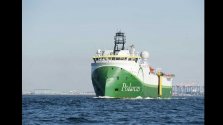While indicators are relatively positive, Jamaica is not yet at a point where it can declare an “oil find” or predict with certainty the presence of oil and gas in commercial quantities in its on-shore or off-shore exploration areas, according to the Petroleum Corporation of Jamaica (PCJ).
In a news release Monday, the PCJ said it can confirm that although work is progressing steadily under a 2014 Production Sharing Agreement between the PCJ and Tullow Oil PLC, Jamaica has not “struck oil”; but the lengthy exploration process continues in a positive vein.
In April 2018, Jamaica’s Oil and Gas Exploration Programme marked a major milestone when
Tullow carried out the first ever 3D Seismic Survey in Jamaica’s off-shore areas. The Survey, which covered a 2,250 square kilometre area within the Walton Morant Block south of Jamaica, allowed the explorer to collect sound imaging data to generate detailed 3D images of rock layers beneath the seafloor for further detailed analysis to identify potential oil and gas reservoirs.
The PCJ said, while an initial interpretation of data has revealed positive indicators of the potential presence of fluids, at this point there is no scientific confirmation of the actual presence of oil or gas offshore Jamaica. Therefore, although the preliminary evaluation showed signs which suggest prospective resources of as much as 200 million barrels, the information is at best, indicative and cannot be considered conclusive.
The detailed risks associated with these prospective resources can only be determined if a well is drilled, said the PCJ in the news release.
In-keeping with established oil and gas industry protocols, Tullow and the PCJ are now undertaking a detailed analysis of the data which should be completed by the end of December. The final results of the survey will be among the factors which influence Tullow’s decision-making around a drill or drop decision with a final determination expected by 2020.
“We are encouraged by the first overview of the results from the 3D seismic survey that was done last year, but there have been situations in other nearby territories where similar indicators were present but they drilled and came up empty so we are not getting ahead of ourselves by making any predictions about the presence of oil or the quantities that may be available,” the PCJ’s acting general manager, Brian Richardson explained.
“Oil and Gas exploration is a lengthy, painstaking process and there is no getting around the geological work including the data gathering and analysis and we are still taking it step by step,” he added.
“Our focus now is working with Tullow to complete the detailed analysis of the 3D data and then we will have the decision-making about potentially moving to the next stage which would be drilling,” Richardson said. “It is an exciting time so we continue to be cautiously optimistic but the only way we will ever be able to speak definitively about the presence of oil or gas in commercial quantities is if we drill and find it.”
